Bryan, the winemaker at Alexana since 2012, tells Canopy: “Over the years I’ve learned that every vintage is so different here in Oregon that you need to be able to adapt your winemaking and blending based on the vintage. Some years may have more or less acid, tannin, colour, etc, and that you really need to draw on your experiences to make the best possible wines year after year. We learn which blocks and clones work well together but every year is different so there’s no recipe that we can go by.”
Bryan has 11 clones of Pinot Noir and 18 distinctly different soil types within the 55-acre (22ha) estate in the Dundee Hills – one of the most famous sub-AVAs in the Willamette Valley for Pinot Noir. “The complexities that we get from that are amazing. So not being very heavy-handed in the winery is important,” he reveals.
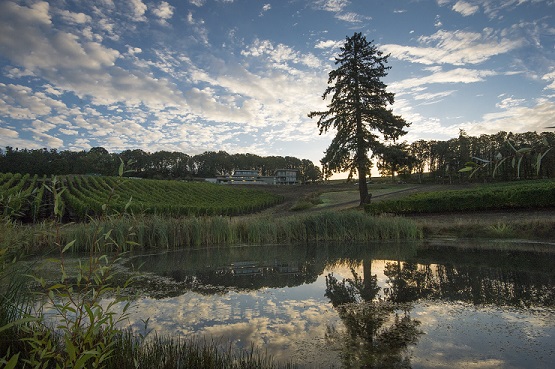
From this wealth of potential, Alexana bottles 12 or 13 different Pinot Noirs each year, split between three lines. The Terroir Series is produced from single vineyards “from likeminded growers in the Willamette Valley”, while wines showing real promise are highlighted and sectioned off to create Alexana's Signature range (from the ten best barrels of estate fruit of that harvest). Fruit for the top-of-the-range Best Block wines comes from a single, exceptional parcel on the estate.
The biggest difference Bryan notices is in the grapes from volcanic soils and sedimentary soils. So, he treats these musts very differently in the winery. He explains: “The volcanic section of the vineyard has fuller canopies and usually much larger clusters, so we are able to extract more from the skins and not worry too much about over-extracting. On the opposite side of the vineyard – in the sedimentary section – it tends to have smaller, less dense canopies and with the heat and wind it receives in the afternoon, the clusters are much smaller. So, we have to really be gentle on those blocks during fermentation because the colour and tannins are in much higher concentrations.”
His boss Dr Madaiah Revana, an Indian cardiologist who bought his first vineyard, in California’s Napa Valley, in 1997 after attending a medical conference in San Francisco, is a huge admirer of Burgundy wines and founded Alexana Winery in 2005 with the goal of producing Pinot Noirs that could rival those of Burgundy. Alexana is named after Dr Revana’s daughter, Alexandra, showing his love for the site.
The philosophy behind all Revana Family Vineyards’ brands – Revana (in St Helena), Alexana, and Corazon del Sol (in Argentina’s Uco Valley) – is to explore terroir.
The Alexana vineyard is dry-farmed, with sustainable and biodynamic farming methods applied to cultivate the Pinot Noir, as well as a few white varieties (Chardonnay, Riesling and Pinot Gris).
Alexana’s first vintage was 2006 and the winery was built in 2012 – the same year Bryan took over as winemaker. Today, Alexana produces approximately 13,000 cases annually, split over 17 bottlings.
Below is the full interview with Bryan, in which he also talks about making Alexana’s white wines and Pinot Noir rosé...
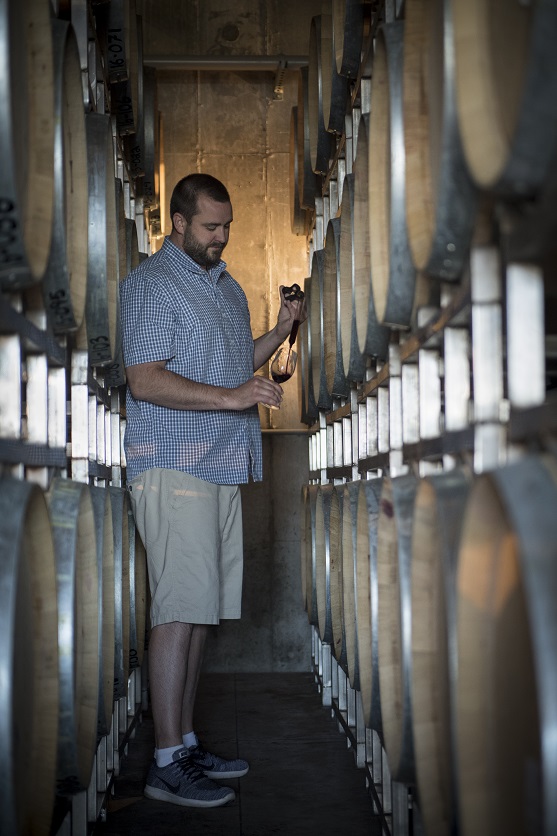
Canopy: Does being a trained chef help you as a winemaker?
Bryan: “When I went to culinary school, I was introduced to wine my first year and never looked back. It intrigued me so much that I continued to take as many wine courses as possible during culinary school, which really set me up for success in terms of sensory. And being in the kitchen, constantly smelling and tasting different ingredients really helped me develop a great palate early in my life, which in turn definitely helped me when I started in winemaking.”
What’s your winemaking philosophy?
Bryan: “We are really spoiled here at Alexana with a beautiful 55-acre estate vineyard in the Dundee Hills that is so diverse and complex that my winemaking philosophy is to show off the vineyard and vintage as much as possible without too much winemaker influence. We have 11 clones of Pinot Noir and 18 distinctly different soil types on this property so the complexities that we get from that are amazing. So not being very heavy-handed in the winery is important.”
How was it starting a new job in a brand-new winery?
Bryan: “It was exciting and stressful all at the same time. Fortunately, the original winemaker of Alexana, Lynn Penner-Ash, was still consulting at the time so we were able to hit the ground running and be setup for success right from the beginning because of her expertise in winemaking and winery design. And we were very lucky that 2012 was an amazing vintage to start out with in the new gravity-flow winery.”
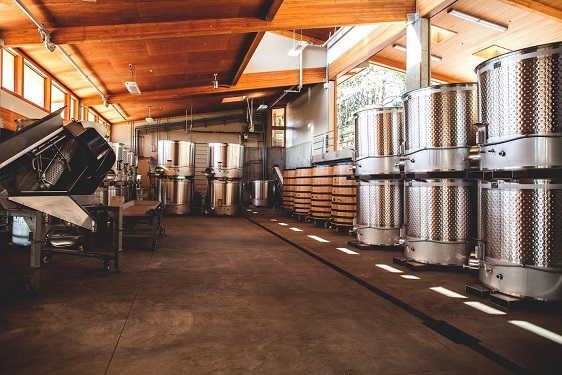
What changes have you made to the winery and equipment over the past decade?
Bryan: “The only real major changes are the addition of tanks and a few smaller pieces of equipment as we have slowly grown our production. We’ve added some additional stainless-steel fermentation and blending tanks and have also added some wood and concrete fermentation tanks that are really fun to work with. The facility, crush pad equipment, press, and other major equipment were all state of the art in the beginning and continue to be. Over the last decade, we’ve really learned how to maximize quality with this great facility and equipment and look forward to continuing that for many years to come.”
What's your favourite piece of equipment?
Bryan: “I love working with the press during harvest. If you can’t find me in the lab doing analysis or tasting, I’ll most likely be by the press tasting Chardonnay, Pinot Gris, and Riesling juice press fractions. We press very gently here so it’s really important to be monitoring the press constantly during these white pressings.”
What is the press?
Bryan: “Europress P34. We use the gentle Champagne press cycle for whites and we manually press the reds at very low pressures.”
Do you use classic Burgundian winemaking techniques for your Pinot Noir and Chardonnay?
Bryan: “I do think we use a lot of Old World techniques as well as some New World techniques and equipment. Some of the key steps to me are being super gentle on the wine and after fermentation letting the wine be on the more reductive side of things in the barrel and really try to minimize any oxygen pickup for these delicate Pinot Noir wines. We don’t pump the wine around but do a lot of very classic manual techniques during fermentation and barrel ageing.”
You make a wide range of Pinot Noirs – how many each vintage?
Bryan: “When I started here with blending and bottling the 2011 vintage, we had four Pinot Noirs that we bottled. Now, as we’ve grown and really started to pick apart this diverse vineyard, we bottle 12 or 13 different Pinot Noirs each year. They are either specific sections/blocks from the vineyard or blends of certain clones/rootstocks.”
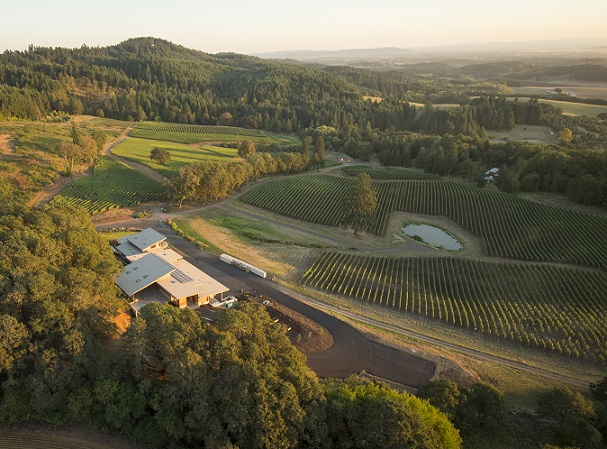
Apart from the clones, soils and vineyards, what are the differences in the winemaking?
Bryan: “The vineyard has two distinct areas of volcanic soils and sedimentary soils that we work with very differently in the winery. The volcanic section of the vineyard has fuller canopies and usually much larger clusters, so we are able to extract more from the skins and not worry too much about over-extracting. On the opposite side of the vineyard – in the sedimentary section – it tends to have smaller, less dense canopies and with the heat and wind it receives in the afternoon, the clusters are much smaller. So, we have to really be gentle on those blocks during fermentation because the colour and tannins are in much higher concentrations.”
What do you learn when you put together the blends of Pinot Noir?
Bryan: “Blending here at Alexana takes two or three-plus months and is one of my favourite times of year. Over the years I’ve learned that every vintage is so different here in Oregon that you need to be able to adapt your winemaking and blending based on the vintage. Some years may have more or less acid, tannin, colour, etc, and that you really need to draw on your experiences to make the best possible wines year after year. We learn which blocks and clones work well together but every year is different so there’s no recipe that we can go by.”
Tell me about the winemaking behind the rosé.
Bryan: “For our rosé we do the direct press method and bring the fruit in very cool to minimize colour and phenolic extraction. I find the more colour Pinot Noir rosé wines have, the more bitter they can be sometimes. After a gentle pressing, the juice then goes to neutral barrels where it’s fermented extremely cold to retain a lot of fresh fruit and tropical notes in the finished wine.”
What’s the temperature and what yeast works well at those temperatures?
Bryan: “The rosé is fermented at 46-48°F (7.7-8.8°C) at the peak of ferment. We really like SIHA7 and GRE yeasts for our rosé ferments.”
What about your Riesling? Tell us about the vinification methods you use.
Bryan: “The Riesling is almost the exact opposite when it comes to pressing the grapes. I love the flavours that you can get out of Riesling skins so we press to the highest level the press can go and leave it there for a fairly long period. Then the juice is put into mostly stainless steel with also a few neutral barrels and is fermented cold as well.”
How long is it left in the press and what's the temperature of the fermentation?
Bryan: “The press cycle for the Riesling takes almost three hours. Fermentation temperatures are similar to the rosé and Pinot Gris at 46-48°F.”
Is the Pinot Gris style more reminiscent of Alsace or Veneto?
Bryan: “I would say our Pinot Gris is probably more on the side of Alsace. Mostly because of where the clonal material (clone 146) originally came from in Colmar, France. Also, the Pinot Gris is planted in a cooler section of our vineyard that helps to maintain some bright fruit and acidity. But, on the other side, we use a fair amount of neutral barrels and even a couple new French oak barrels in the blend to provide a nice richness and balance.”


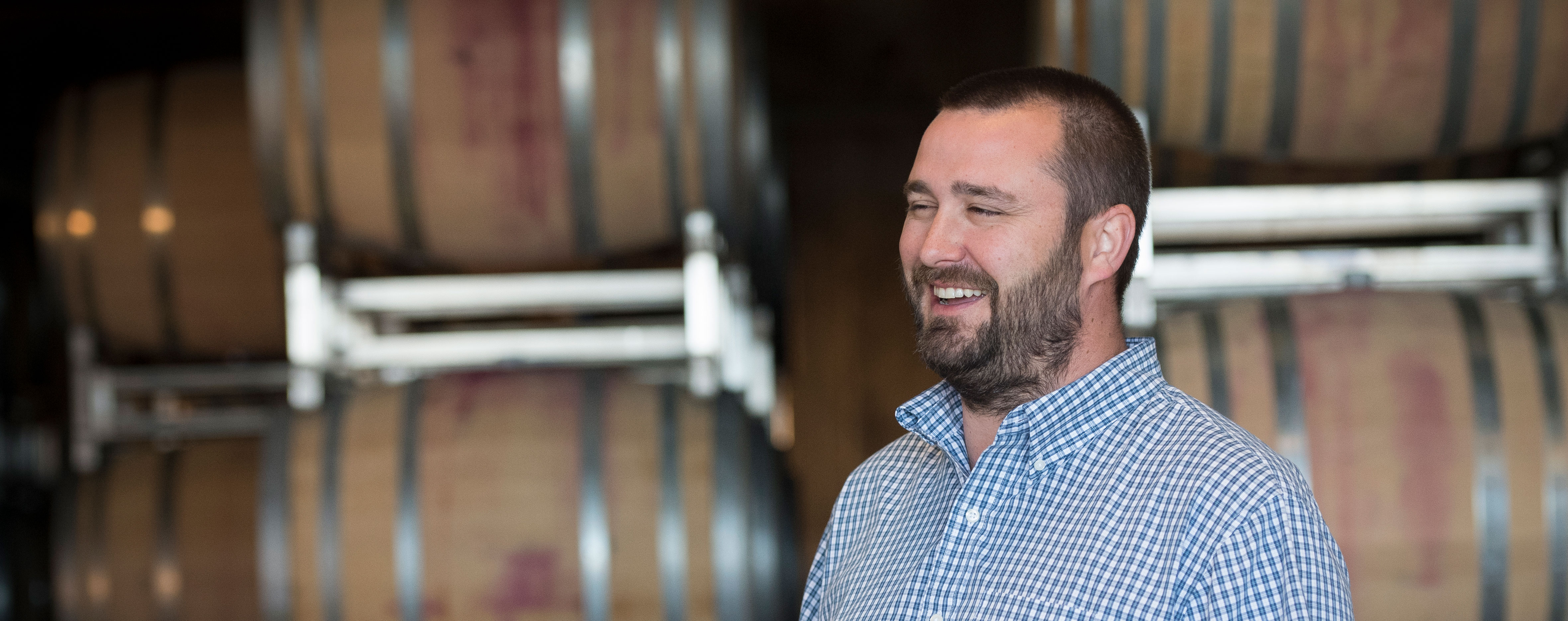










.png)






